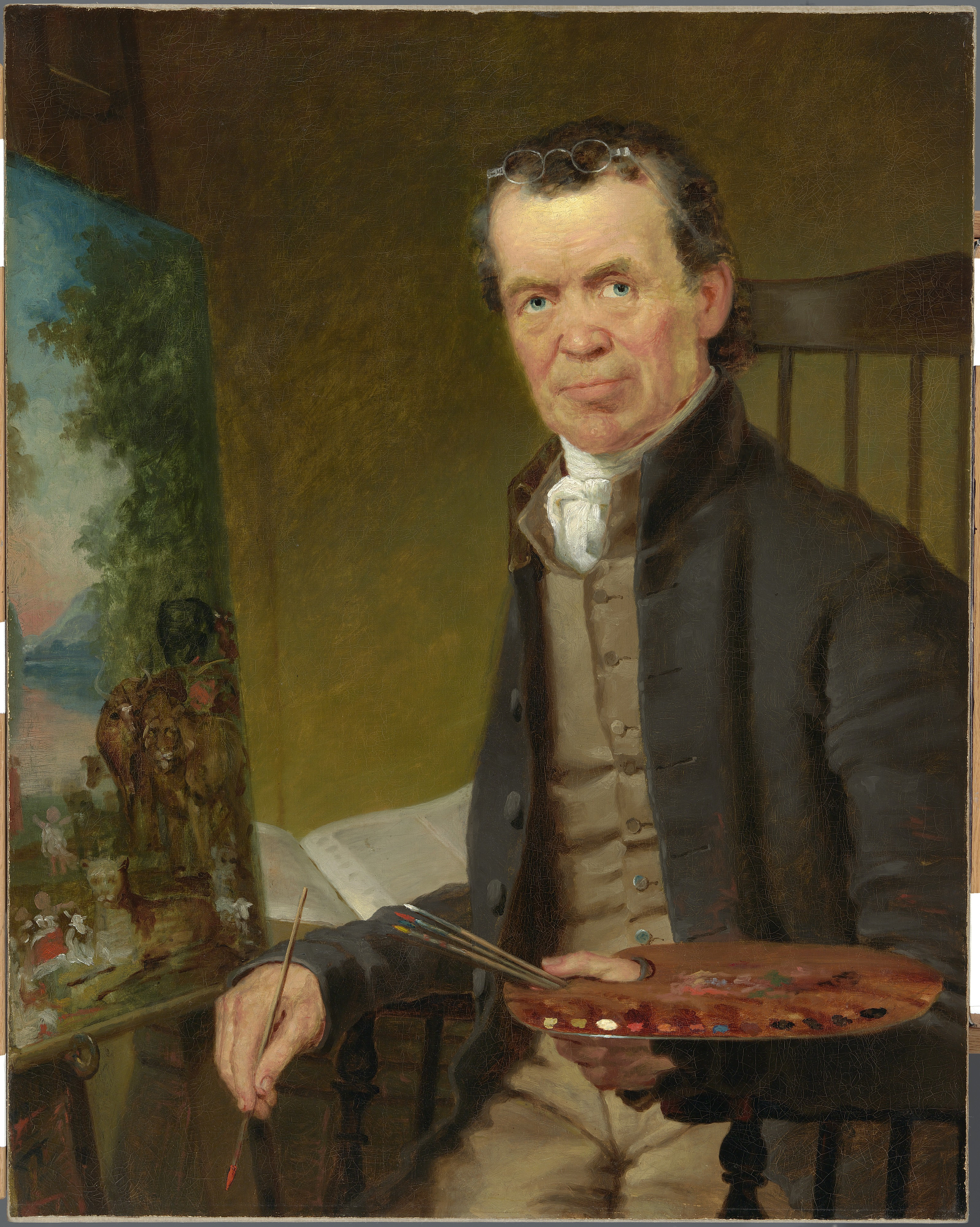More about Edward Hicks
- All
- Info
- Shop
Works by Edward Hicks

Contributor
Some might consider Edward Hicks to be the original American “butter face," but despite his face resembling a skull wearing a skin mask, Hicks was Mr. Popularity in his small Pennsylvania hometown while he was alive.
Edward Hicks was the grandson of a wealthy Tory, also known as the political party that wanted to keep the U.S. part of England during the Revolutionary War. Needless to say that after the war Grandpa Hicks had a hard time hanging onto his way of living so he ultimately had to bid all of his money and property adieu. This doomed all future generations of the Hicks family to a life of working hard for the money. Edward Hicks’ dad wasn’t about that working life and was unable to support his family, so he had to send them to live with the neighbors.
At this point young Edward was 3 years old. He lived with the neighbor family, the Twinnings, until he turned 13 and then was sent to be an apprentice at the local coach-making school. This was where Hicks was introduced to two major aspects of his life: drinking and painting. Hicks proved to be an amazing coach painter, so he ended up branching out to painting signs and other things that needed classy little detail work.
In the year 1800, Hicks found Jesus in the Quaker religion and started attending meetings at the Religious Society of Friends, which he never stopped attending. By 1811 Hicks became a preacher in the Quaker church where he earned community-wide fame for his ability to express the “inner light” that one could achieve and nurture through spiritual contemplation. This ability, though, came from Hick’s emotional instability. What his parishioners saw as passion was actually just a tendency to throw temper tantrums and cry with little warning.
Even though Hicks’ subjects were nearly always religious, the Quaker church frowned upon Hicks’ art, saying it was frivolous and unnecessary. To make his church happy, Hicks gave up painting for a little bit to become a farmer. It turned out, though, that Hicks had nothing close to resembling a green thumb, so he gave up farming and went back to painting.
Hicks became obsessed with the Quaker story of Paradise and obsessively painted variations of The Peaceable Kingdom throughout his life, creating more that 100 copies. He traded, sold, and bartered his works to help support his family since his preacher paycheck didn’t quite pay all the bills.
Hicks would stick to painting as he got on in years. He even painted a copy of The Peaceable Kingdom for his daughter the night before he died. For a crazy sign-maker turned preacher who never lived anywhere outside his hometown, he ended up achieving international fame for one subject, which is pretty darn cool.
Sources
- Cotter, Holland. "Finding Endless Conflict Hidden in a Peaceable Kingdom." The New York Times. June 15, 2000. Accessed March 05, 2017. http://www.nytimes.com/2000/06/16/arts/art-review-finding-endless-confl….
- "Edward Hicks: The Peaceable Kingdom," Worcester Art Museum - Edward Hicks: The Peaceable Kingdom, , accessed February 27, 2017, http://www.worcesterart.org/collection/American/1934.65.html.
- "Edward Hicks Painting the Peaceable Kingdom," Edward Hicks Painting the Peaceable Kingdom, , accessed March 05, 2017, http://npg.si.edu/object/npg_NPG.88.53.
- Holt, Frank. "The Kingdoms of Edward Hicks | The Folk Art Society of America." The Kingdoms of Edward Hicks | The Folk Art Society of America. Accessed March 28, 2017. http://folkart.org/mag/edward-hicks.
Featured Content
Here is what Wikipedia says about Edward Hicks
Edward Hicks (April 4, 1780 – August 23, 1849) was an American folk painter and distinguished Christian minister of the Society of Friends (a.k.a. "Quakers"). He became a notable Quaker because of his paintings.
Check out the full Wikipedia article about Edward Hicks












